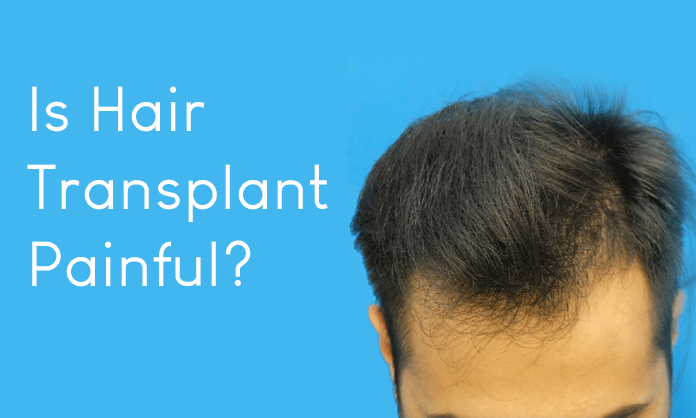Table of Contents
Hair transplantation, or what is called hair restoration, is a cosmetic and surgical procedure aimed at transferring hair from donor areas full of hair to bald areas or those suffering from hair thinning and thinning.
Process of Hair Transplant
The process of hair transplantation is carried out using multiple techniques around the world, including modern and traditional ones, and in India, the third country to use hair transplantation, and the first to spread the procedure, hair transplantation is performed either by picking technique or by slide technique.
How to Performed Hair Transplant?
Hair transplantation can be performed with different types either for the scalp as a necessary corrective measure for cases that have been exposed to some injuries, burns, or other accidents, or it can be done to restore the hair in the eyebrows, eyelashes, mustache, and beard.
The hair transplantation process takes a long period of 5 to 9 hours under the influence of local anesthesia, and it is done for all men and women on the condition that they enjoy good health, that the age exceeds 18 years, and that the patient is willing to abide by the doctor’s instructions.
Basic Information About Hair transplantation
The hair transplantation process involves transplanting hair follicles into follicular units on the scalp, with each follicle containing from 2 to 4 hairs.
In slide hair transplantation, a slice is cut from the donor area in the scalp, which is often at the back of the head, and then hair follicles are removed from it and planted in the balding areas and the two ends of the skin are sutured in the place of the excision of the slice.
In FUE hair transplantation, which is the newest technique, hair follicles are removed one by one without the need to cut a slice from the back of the head, and therefore the FUE technique takes more time, but it does not leave a linear scar, but rather small points that can only be noticed if the hair is completely shaved.
The average number of roots a patient needs during the transplantation of any area varies between 1000 to 5000 roots in a single hair transplant, and the healing and recovery period after hair transplantation depends on the process and varies from patient to another.
The success of hair transplantation depends primarily on the doctor who conducts the operation, his professional experience, his cosmetic skills, his scientific and practical knowledge, and then the patient’s responsibility to adhere to his doctor’s instructions during recovery periods.
Is a Hair Transplant Painful?
The only pain that can be addressed during the hair transplant procedure is the pain of local anesthesia that is applied to the scalp due to the nature of the needle, and the injection in a sensitive area such as the scalp, but many cosmetic centers currently have adopted a new anesthesia system that avoids the patient feeling pain and thus gets Perfect operation completely without pain.
The new anesthesia in hair transplantation is based on injection directly under the skin, and it is completely free of needles and improves the effectiveness of local anesthesia for several applications and provides advantages over just a pain-free injection, as the anesthetic is injected through a very small opening, which makes hair transplantation more comfortable with Preserve the tissue by avoiding not to repeat the injection in the same location over and over again.
It should be noted that the process of hair transplantation, whether by the technique of slice or extraction, is a surgical process through which the roots of the hair are transferred from the donor areas to the donor areas, and the scalp is wound with special tools, so it is sharp and injurious to the scalp. In other words, a piece of skin is removed with medical scalpels and in the technique of extraction, the roots are removed by a precise device that digs around the root and removes it, and during transplantation, the channels incubating the roots are opened, either with needles or blades.
But the pain resulting from the hair transplant process is non-existent as a result of using local anesthesia, and in the case of local anesthesia with needles, the pain will be at the beginning of the operation only as a result of the anesthesia needle from once to quarter times and the pain is very light and represented by pricking the anesthesia needles and after that, the patient will never feel pain, as The scalp is numb.
Anesthesia in hair transplantation is localized only in two stages, the first stage to avoid pain in the donor areas and during the taking of the roots, and the second stage to avoid pain during the opening of the incubating channels for the roots.
How to be a good candidate for hair restoration?
Hair transplantation is for all adult people who suffer from various hair problems:
- People with typical male pattern baldness either in men or women which means that a person loses hair at the front, top, or crown with a reserved area on the back and sides of the scalp.
- People with hair loss secondary to burns or trauma.
- People who want to change or restore their hair.
- People with loss of eyebrow or eyelash hair.
- People who want to improve the unnatural appearance of old transplant results by adding density, removing and replacing old and thickened grafts, and redesigning the hairline.
It is also taken into account that these persons fulfill these conditions;
- The candidate should be physically healthy, meaning not to suffer from any serious diseases such as cardiovascular disease, fluidity, diabetes, and others.
- That the person has a thickened donor area with hair, such as those on either side or at the back of the scalp.
- Not to be a smoker, because smoking greatly affects the transplanted hair follicles and leads to a delay in their growth and sometimes to their complete death.
- The person should not have cancer or are still in the stage of chemotherapy, which leads to heavy shedding is one-tenth.
- The person should not suffer from any skin diseases on the scalp such as ringworm, eczema, or any active infection.
Which people who are not suitable for hair restoration?
Just as there are people who are qualified to perform hair transplantation, there are also some people who are not qualified to perform this operation, and they are;
- Men and women with alopecia areata, who have thinning hair at the front and top of the scalp along with hair loss or significant hair loss on the sides and back of the head and expect active hair loss in those areas.
- Women with typical patterned hair loss because these patients usually have diffuse hair loss and may not have a good donor area with hair follicles that can be harvested.
- Patients with unrealistic expectations such as one who suffers from extensive hair loss and not having an adequate amount of donors who still expect a juvenile hairline to be restored.
- People with widespread hair loss, as they likely do not have enough hair follicles in the donor area, as well as people with serious or chronic medical conditions that are not well controlled with medications such as uncontrolled diabetes or a thyroid hormone imbalance.
Related Article:











